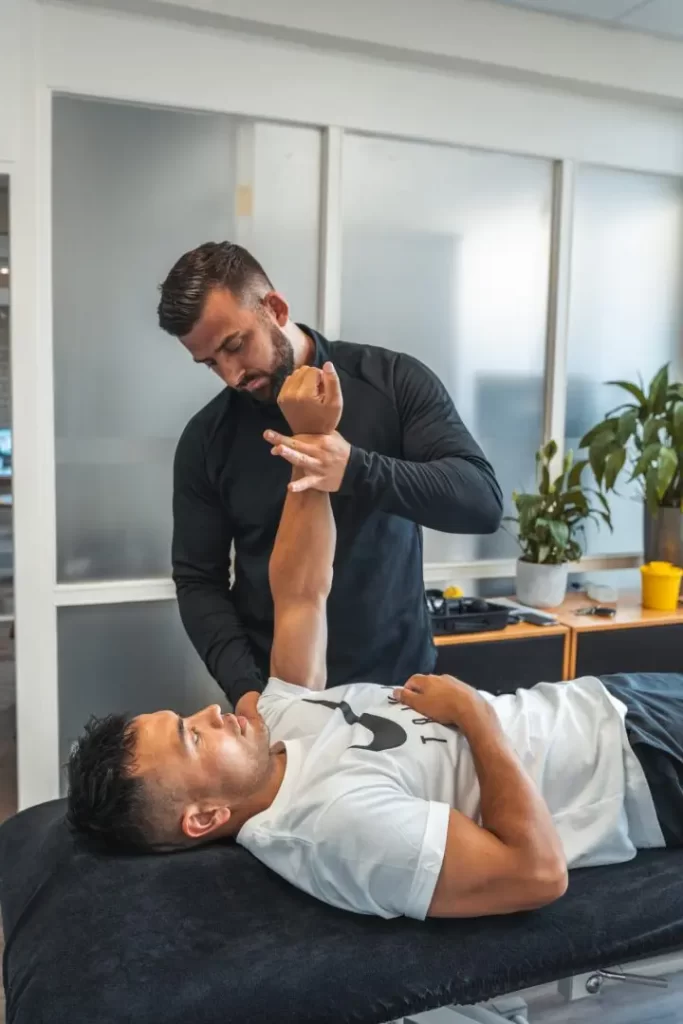Injury to the posterolateral complex
The knee is made up of several structures. In terms of bones, the knee region consists in its totality of the femur, tibia, fibula and patella. Around these run various muscles, the meniscus and various ligament structures.
Together, these provide ability to move, shock absorption, stability and control in the knee. At the knee, we find the following larger ligament structures;
- anterior cruciate ligament (VKB)
- posterior cruciate ligament (AKB)
- lateral collateral ligament (LCL)
- medial collateral ligament (MCL)
- posteromedial complex (PMC)
- posterolateral complex (PLC)
In an injury where the forces are great enough, there can be actual damage to the ligaments in or around the knee. In this blog, we will look specifically at injury to the posterolateral complex.

Cause
The posterolateral complex of the knee consists of several ligaments (ligaments) and tendons. The most important are the popliteal tendon, the lateral collateral ligament and the popliteo-fibular ligament.
An injury to the posterolateral complex causes instability symptoms. This usually happens after a fall or twisting of the knee, usually during sports. In most cases, there is a combined injury. This means that not only the posterolateral complex is damaged but that other structures in the knee such as the anterior cruciate ligament are damaged. Other structures that we usually see in combination with injury to the posterolateral complex are damage to the meniscus or posterior cruciate ligament. More than 70% of all cases with posterolateral instability involve combined injury.
Symptoms that may indicate posterolateral injury include
- tingling in the foot (in ⅓ patients).
- pain on the outside of the knee
- bruising (in the acute phase)
- unstable feeling in the knee
Missing posterolateral injury in e.g. anterior cruciate ligament or posterior cruciate ligament injury at the physiotherapist or orthopaedist's office has a huge impact on rehabilitation. Missing posterolateral instability is one of the biggest reasons for re-tearing of the anterior or posterior cruciate ligament after surgery. Therefore, diagnosing injury to the posterolateral complex quickly is very important and has a great impact on the success of your rehabilitation. If this injury is properly diagnosed and treated within two weeks of its onset, it can recover well in many cases and chronic instability can be prevented.
Within physiotherapy, it is very important to know how the knee injury occurred, what movement was made and what symptoms it brings. We will always test the posterolateral complex in an injury where there may be damage to the outside of the knee. In these cases, we know that there is also a chance of an anterior or posterior cruciate ligament injury. So this will always be included in the examination of the knee.
Injuries to the posterolateral complex can be classified into different degrees
Grade 1 means partial rupture with minimal instability
Grade 2 means a partial rupture with instability where an end point in varus stress is present (<10mm instability and an increase in exorotation on the Dial test in 30 degrees of less than 10 degrees).
At grade 3, there is a complete rupture with no end point at varus stress (>10mm instability and >10 degrees of exorotation at Dial test in 30 degrees).
Treatment of the posterolateral complex can be treated with regular physiotherapy (maximum grade 2 injury) or by surgery (grade 3 injury or in combination with other injuries). If surgery is not performed, the leg is put in a cast in a stretched position of the knee.
Surgery gives the best results when surgery is performed within 3 weeks of the genesis moment. We also see better results with reconstruction than with repair surgery. This may involve using tissue taken elsewhere from your own body (autograft). Another choice is to use donor tissue (allograft). Usually, the choice is made to use hamstring tendons or tissue taken from the iliotibial band. After surgery, you should only load 50% for at least the first 4 weeks. In addition, you will have to wear a brace 24 hours a day for up to 12 weeks that incorporates a flexion lock. This ensures that you cannot bend beyond 120 degrees.
Total rehabilitation takes six months to a year. Here, we generally see that someone with a sedentary job can resume his or her activities after only a few weeks. Someone with a more active profession will unfortunately have to be a bit more patient.
Making an appointment at FysioFitaal
We work from multiple locations in Tilburg, always close by for professional and accessible physiotherapy. Fill in the contact form and we will contact you soon. Together, we will work on your recovery!

